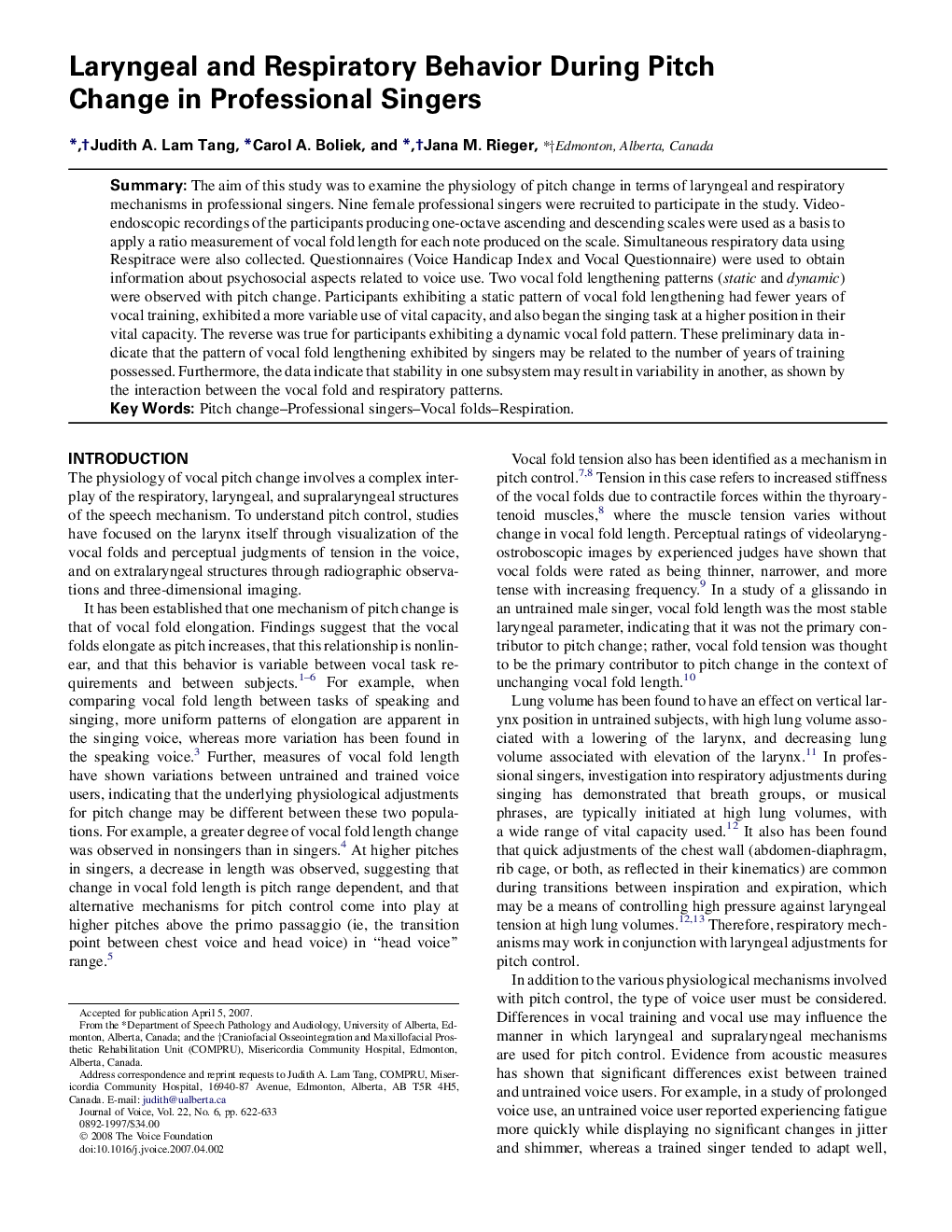| Article ID | Journal | Published Year | Pages | File Type |
|---|---|---|---|---|
| 1102582 | Journal of Voice | 2008 | 12 Pages |
SummaryThe aim of this study was to examine the physiology of pitch change in terms of laryngeal and respiratory mechanisms in professional singers. Nine female professional singers were recruited to participate in the study. Videoendoscopic recordings of the participants producing one-octave ascending and descending scales were used as a basis to apply a ratio measurement of vocal fold length for each note produced on the scale. Simultaneous respiratory data using Respitrace were also collected. Questionnaires (Voice Handicap Index and Vocal Questionnaire) were used to obtain information about psychosocial aspects related to voice use. Two vocal fold lengthening patterns (static and dynamic) were observed with pitch change. Participants exhibiting a static pattern of vocal fold lengthening had fewer years of vocal training, exhibited a more variable use of vital capacity, and also began the singing task at a higher position in their vital capacity. The reverse was true for participants exhibiting a dynamic vocal fold pattern. These preliminary data indicate that the pattern of vocal fold lengthening exhibited by singers may be related to the number of years of training possessed. Furthermore, the data indicate that stability in one subsystem may result in variability in another, as shown by the interaction between the vocal fold and respiratory patterns.
